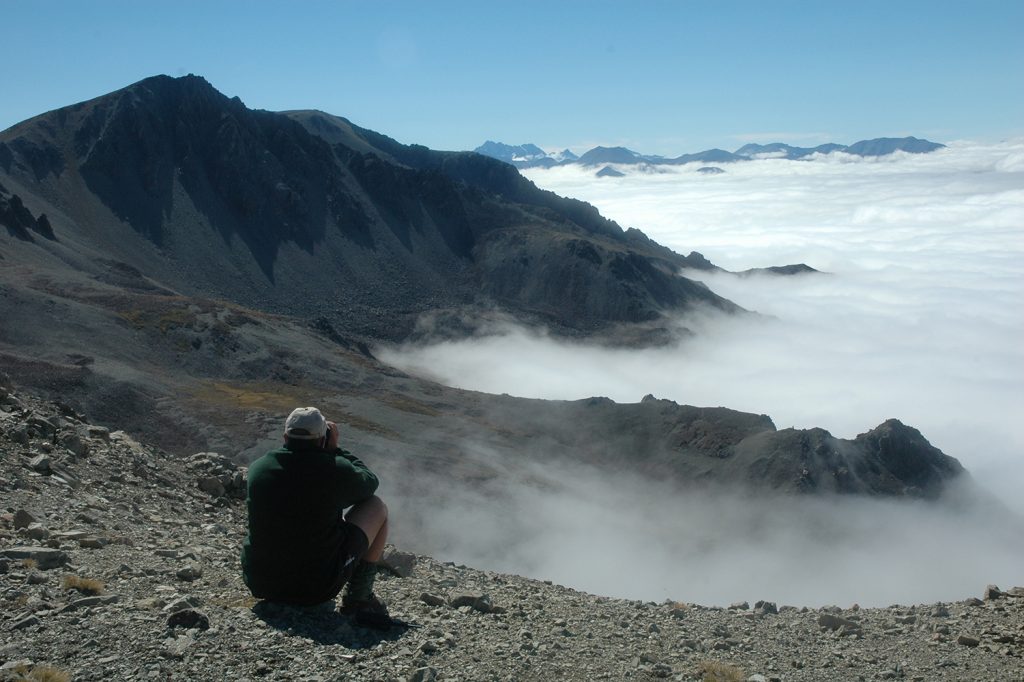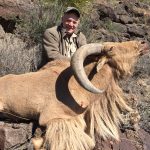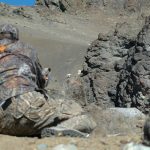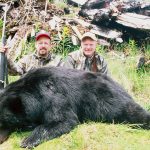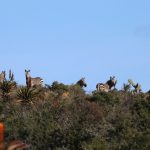Pursuit of this magnificently maned goat makes for a fantastic mountain hunt.
In summer, the Himalayan tahr is a drab, stocky goat seriously cheated in the horn department. Ah, but as weather cools and it’s time for winter coats, mature males grow a long, luxurious golden mane or throat ruff. During the mating season, dominant males fluff out their manes in ritual display–perhaps quality of mane replaces headgear in impressing their ladies. A bull tahr standing on skyline, presenting his colors, is one of the most dramatic sights in Nature. When a tahr stands with its head up, the horns are almost invisible, so it’s the dramatic mane that draws our eyes, more like a lion than a horned animal.
Although not closely related, the tahr has parallels with our Rocky Mountain goat: Short, unimpressive horns, with the luxurious coat an important part of the trophy. It is essential to hunt tahr when it’s in its winter coat (which lasts through spring), when the mane is full; likewise, it’s best to hunt our American goat as late as possible, when the snow-white coat is longest. The tahr isn’t as big an animal as the Rocky Mountain goat, with the biggest males at least a quarter smaller, maybe 200-plus pounds. It’s still a big animal to get off the mountain but, like our goats, they look much bigger than they are because of the long hair.
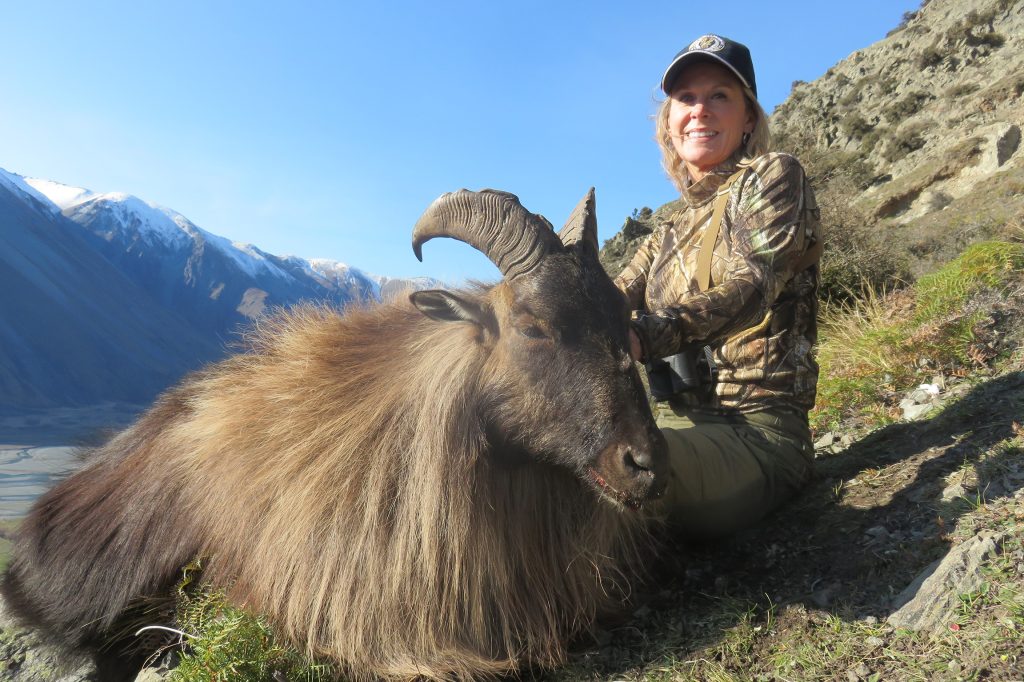
Although also short, horns are not similar. The tahr has much thicker bases, up to ten inches in circumference, and horn length in good bulls is around twelve inches, occasionally reaching fourteen inches with the largest known. Like most Caprinae, the horns have annular growth rings. Also like many sheep and goats, tahrs head-butt in mating battles. The sharp tips tend to curve back and down. Naturally, this is said to limit penetrating horn wounds during mating battles. It must work, because in my experience bull tahrs with broken horns are unusual. Like our goat (and chamois), female tahrs have horns, but the female’s horns are much smaller, almost vestigial.
There are actually three tahrs, once thought separate species of one genus, but they’re not so closely related, so science now identifies three genera, all with one species and no known subspecies. The two not many have heard of are the Arabian tahr (Arabitragus), believed to be hanging on in parched, rugged mountains in Oman; and the Nilgiri tahr (Nilgiritragus), still with a known, protected population in southern India.
The tahr most of us know about, and the only one of interest to hunters, is the Himalayan tahr, Hemitragus (half-goat). The Himalayan tahr is widespread and reasonably plentiful along the southern fringe of the Himalayas, native to a long strip between India, Nepal, Bhutan, and tipping into southern Tibet. This is because the tahr isn’t a creature of the highest mountains. Like most goats, they love rough country, so are found in the tall foothills, not among the higher peaks. Nepal is still the only place where the tahr can be hunted native-range and free-range.
In Nepal’s Himalayas, you look for them in steep, brushy cuts near timberline, in that latitude about 12,000 feet elevation. The blue sheep, or bharal, are found higher up, almost in the big mountains proper. Although tough, the mountain hunt in Nepal is one of the world’s best mountain expeditions. There is some chance along the way for muntjac and wild boar. Now-protected goral and serow will probably be seen, with sightings of leopards and bears possible, but Nepal is primarily a two-species hunt: Blue sheep and tahr.
Although you must climb to higher elevation for the blue sheep, in my experience tahr was the more difficult pursuit. Not nearly as plentiful, singles and small groups rather than herds, and much more difficult to glass. The tahr country is also steeper and rougher. Once you get on up to 14,000 or 15,000 feet, the blue sheep tend to be found in big, open, treeless valleys and on wind-swept ridges. In Nepal, almost everyone gets a blue sheep. Not everyone will find a shootable tahr.
Nepal was my most memorable mountain hunt, and I was fortunate to take excellent specimens of both blue sheep and tahr. We saw quite a few; partner JY Jones and I took our tahrs in just two or three days, then moved camp on up above tree line to hunt blue sheep. Although excellent in all ways, it was a tough hunt. I’d like to do it again, but that was a dozen years ago, and I’m not certain I’m still capable.
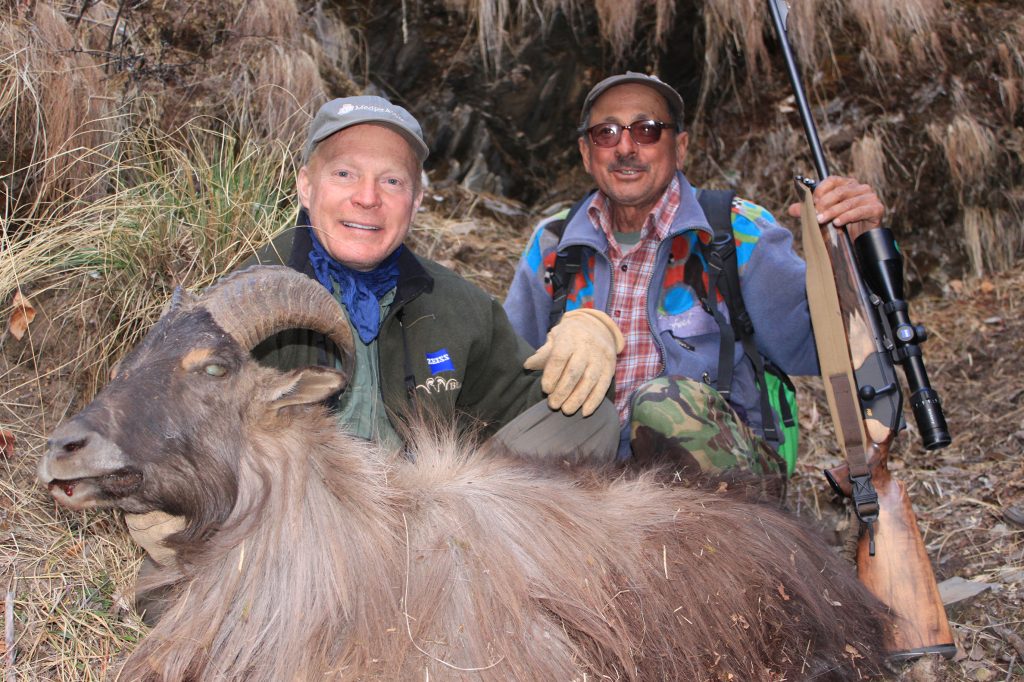
Fortunately, Nepal isn’t the only place the Himalayan tahr can be hunted, and probably not even the best. As well as New Zealand’s Southern Alps, the Himalayan tahr has been introduced into Argentina, South Africa, a few isolated spots in Europe, and even the United States. There are tahrs on some Texas ranches, but there have also been at least three little-known free-range populations in the United States.
The tahr was part of Dr. Frank Hibben’s “ecological niche” experimentation that also brought aoudad, ibex, and gemsbok to New Mexico. Tahr persist in some remote canyons, but the population isn’t large. William Randolph Hearst introduced them onto his Central Coast “Hearst Castle” estate. At one time they were plentiful, often seen on the long driveway up to the castle, frequently wandering off onto adjacent ranches where they could occasionally be hunted. Current status is unknown, but it’s believed the now-plentiful cougars have hammered them badly. For sure, there aren’t as many as there once were; I haven’t heard of a sighting lately, but that stuff is kept pretty quiet. There was also a small breeding population on private land near the Chalk Bluffs in northeast Colorado, but I haven’t heard anything about them in years.
New Zealand was naturally devoid of large mammals. During the latter nineteenth and early twentieth centuries, widespread experimentation was done to fill that void, with numerous attempted introductions. Little-known failures included blue sheep and mule deer. Moose made it for a time but, although still rumored, have probably been gone for fifty years. The successes are better-known: Fallow, red, rusa, sambar deer, chamois, and Himalayan tahr. In 1904 the Duke of Bedford sent six tahr to New Zealand from his Woburn Abbey estate. One jumped off the boat, so only five survived. In 1909 the Duke sent five more, and all made it. These thirteen tahrs are the basis for the tahrs now widespread across the South Island’s Southern Alps.
Legally (and controversially) considered a pest, New Zealand’s quasi-management goal is to maintain tahrs at a maximum of 10,000 animals. Actual population is possibly still much larger, but they have been exterminated from much Crown (public) land by helicopter gunning. The good news: They are also plentiful on various large, unfenced private stations (ranches), where the government cannot eradicate them, and they are also a fixture on large hunting estates.
Tahr only occur on the South Island, without question the best place in the world to hunt them. New Zealand is justly famous for the world’s biggest red stags, but here’s the rub: New Zealand’s awesome stags are largely a product of decades of active deer farming (for venison and velvet), so the biggest stags are almost invariably behind wire. The majority of tahrs (and chamois) are free-range, so I rate the Himalayan tahr as New Zealand’s top animal and best hunt.
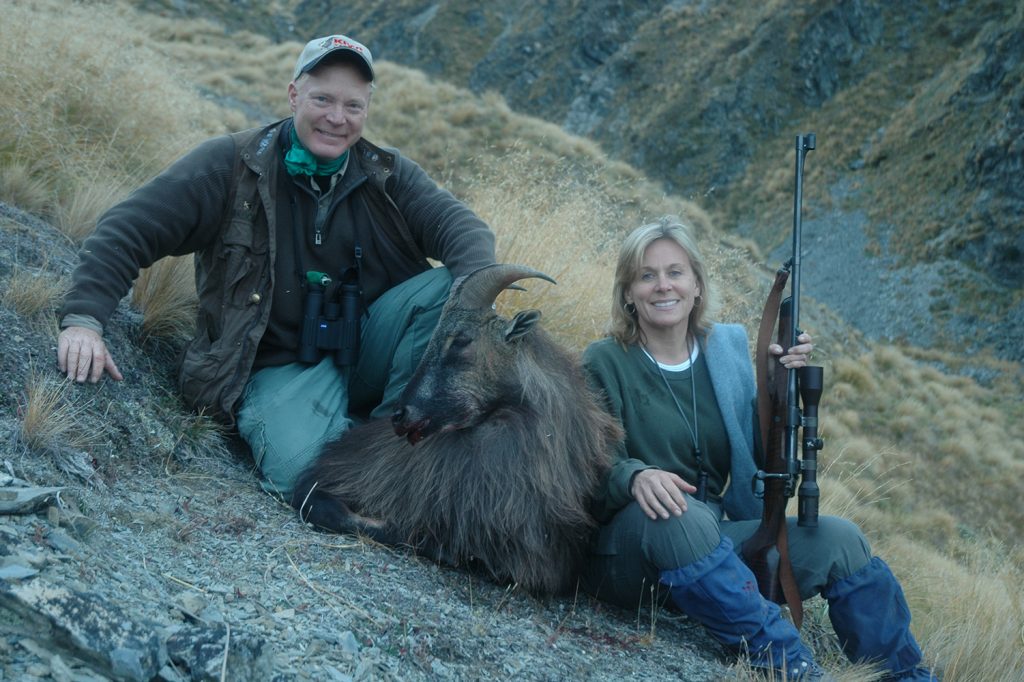
Helicopter access and, sadly, even gunning, are generally legal and common in New Zealand. I don’t care for the latter, but helicopter drop-off can be an option. Especially on the west coast, the mountains rise so precipitously that it’s almost impossible (and deadly) to get up or down without technical climbing gear. The north-central mountains generally aren’t as steep, so there are a lot of areas where walk-up tahr hunting is practical.
Starting in 1988, I suppose I’ve done at least a dozen tahr hunts in New Zealand. Not all for myself; Donna has shot a couple, daughters Brittany and Caroline one each, and I have sometimes accompanied other hunters. I love it; it’s a real mountain hunt in gorgeous country for a fantastic animal. Like everything else, prices have gone up, but a New Zealand tahr hunt won’t break the bank and, if you’re up for the climb, it’s cheaper without helicopter time.
I’ve done just two tahr hunts with helicopter assistance, once on the west coast where that was the only safe way. Another time, Donna and I got dropped off on top and hunted our way down, a long day but great fun. The rest have been walk-up hunts, mostly with Chris Bilkey, who specializes in such things. Tough, yes, but never a killer. In 2011, I went along with Bilkey and Bill Jones just three months after my heart attack. I figured if I could survive that I’d be good to go, and I have been. Lord knows I don’t need another tahr, but that’s probably a climb I’ll make at least one more time!
